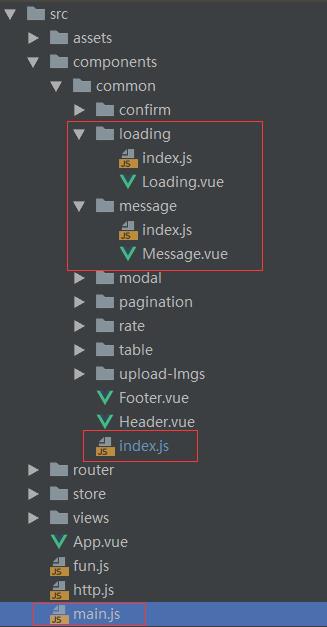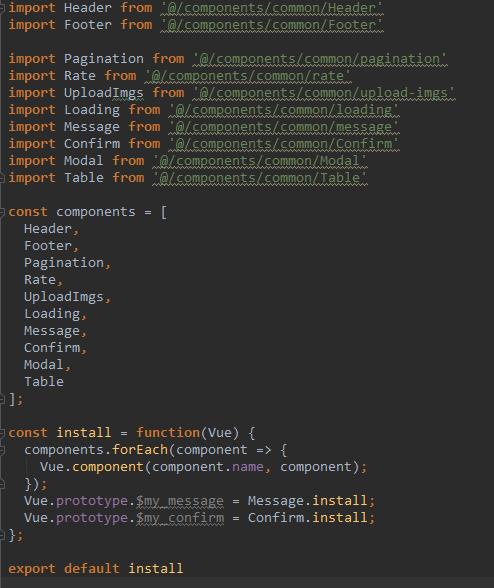Vue 使用useprototype自定义自己的全局组件
Posted conglvse
tags:
篇首语:本文由小常识网(cha138.com)小编为大家整理,主要介绍了Vue 使用useprototype自定义自己的全局组件相关的知识,希望对你有一定的参考价值。
使用Vue.use()写一个自己的全局组件。
目录如下:

然后在Loading.vue里面定义自己的组件模板
<template>
<div v-if="loadFlag">
Loading...
</div>
</template>
<script>
export default {
name: "MyLoading",//组件名称
props: [\'loadFlag\'],
}
</script>在loading文件夹下的index.js文件里面添加install方法
import Loading from \'./Loading.vue\'
Loading.install=function(Vue){
Vue.component(Loading.name,Loading) //组件名称取组件的name
}
export default Loading //导出组件main.js
// 引入自定义组件。index.js是组件的默认入口
import Loading from \'../components/common/loading\'
Vue.use(Loading);接下来就是在页面里面使用组件了,这个组件已经在main.js定义加载了
<template>
<div id="app">
<!-- 使用自定义组件 -->
<my-loading></my-loading>
</div>
</template>
<script>
export default {
data() {
return {
loadFlag: true,
}
},
created: function () {
this.getTableData();
},
methods: {
getTableData() {
this.$http.post(\'.../\').then(res => {
...
this.loadFlag = false;
});
}
}
}
</script>message组件和loading有所不同,使用Vue.prototype.$my_message = Message.install方法导入,调用时直接使用this.$my_message(\'这是一个message\'),可参考“Vue 自定义全局消息框组件”
所有的全局组件也可在一个js里定义,然后在main.js全局使用
如下图是common文件夹下的index.js

main.js中使用

以上是关于Vue 使用useprototype自定义自己的全局组件的主要内容,如果未能解决你的问题,请参考以下文章